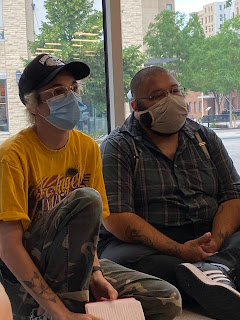This week the Art TEAMS teams got together again to start our Fall activities. We had a joyous day reconnecting and discussing the work we have started doing with our students based on the summer courses. The meeting has taught me a few lessons that will sit with us as we plan the interactions throughout the semester.
Lesson 1:
The impact of deep learning in the summer has already created impact on classrooms. Many of the teachers have reported implementing the Creative Research Journals and even starting the Inquiry Cycle. While it is hard to attribute the implementation to a specific cause. I believe that it was the mix of highly motivated teachers and the powerful learning we had in the summer.
Lesson 2:
Movement is still magic. We started the day with movement, and the teachers are hungry for more movement that is applicable for the classroom. We can make a real difference if we help teachers figure out this part of their work.
Lesson 3:
We always try to teach too much. We have provided our teachers with many tools. Now is the time to create more "air" in the curriculum and make sure teachers have enough time to share their work, plan next steps, and think deeply.
Finally a personal lesson from my reflection about the EMA project led by the Fabulous Gretchen Larsen.
When ideating, go slow and make sure that you spend enough time thinking about the centrality of your idea and my real commitment to it. I have moved too fast to really evaluate my commitment to the purpose of the design. Now I am slowing down and evaluating my project in early iteration. More soon!








